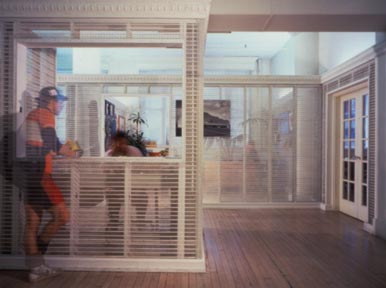|
|

|
|
The Bayard-Condit Building completed in 1898, is the only work by Louis Sullivan in New York City. Commissioned by the United Loan and Investment Company, the ornate terra cotta facade is a historic landmark.
These scrim-like walls function as an evolutionary or 'living' wall system. The blurred images of objects and motion of people as they pass behind the walls, fuse with the wall surfaces. This visual effect, combined with the varying densities as the walls transform from transparent to semi-opaque, responding to the changing light conditions, and conveying a mysterious dimension animating the space.
|
